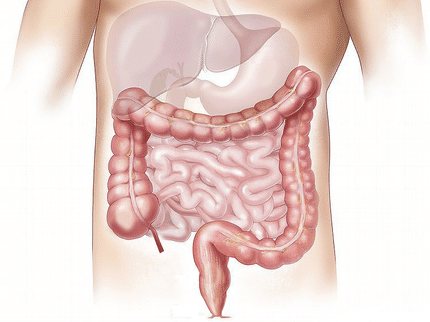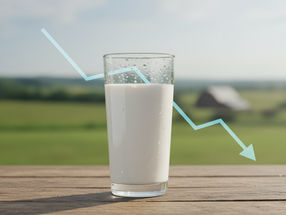Waist circumference is even more indicative of obesity-related cancer risk in men than BMI
Waist circumference less meaningful for women
Advertisement
The body mass index (BMI), a value derived from the ratio of height to weight, is a recognized marker for measuring obesity and calculating the associated risk of certain forms of obesity-related cancer. New research findings by biostatistician and epidemiologist Josef Fritz from the Medical University of Innsbruck now show that the waist circumference of men is an even more significant risk factor for the development of obesity-related cancer than the BMI. However, this finding does not apply to women. The study "Comparing waist circumference with body mass index on obesity-related cancer risk: a pooled Swedish study" was recently published by the Journal of the National Cancer Institute (JNCI).
For the analysis, Fritz, who works at the EpiCenter (Director: Peter Willeit) at the Medical University of Innsbruck and at Lund University in Sweden, together with his Swedish colleagues Ming Sun and Tanja Stocks, evaluated the data of 339,190 people (average age 51.4 years) collected between 1981 and 2019 in various Swedish population groups and compared them with cancer diagnoses from the Swedish Cancer Registry. During a mean follow-up period of 14 years after the BMI and waist circumference survey, 18,185 obesity-related cancers were registered.
Obesity-related cancers are defined by the International Agency for Research on Cancer (IARC) as those for which there is sufficient evidence of an association with obesity: Esophageal, stomach, colon, rectal, liver, bile duct, gallbladder, pancreatic, breast, endometrial, ovarian and thyroid cancers, as well as renal cell carcinoma, meningioma and multiple myeloma.
Abdominal fat is decisive for men
The analysis of the processed measurement data revealed a clear difference in the significance of waist circumference and BMI in men with regard to the risk assessment for the development of obesity-related forms of cancer: A waist circumference that was about 11 centimeters larger (e.g. of 101 centimeters compared to 90 centimeters) was associated with a 25 percent higher risk of developing obesity-related cancer. In contrast, a BMI increase of 3.7 kg/m² (e.g. a comparison of a BMI of 27.7 kg/m² versus 24 kg/m²) corresponded to a risk increase of only 19 percent. The two values - 11 centimeters for waist circumference and 3.7 kg/m² for BMI - each correspond to approximately one standard deviation in the population studied and are therefore directly comparable.
"BMI says nothing about the distribution of body fat, while waist circumference is an indication of abdominal fat. This distinction is crucial because abdominal fat, which accumulates around the abdominal organs, is more metabolically active and is associated with other health disadvantages such as insulin resistance, inflammation and elevated blood lipid levels. Consequently, people with similar BMI may have different cancer risks depending on their fat distribution," Fritz explains the result. This would suggest that the cancer risk associated with waist circumference and thus abdominal fat is specific and cannot be measured by BMI alone.
Waist circumference less meaningful for women
In women, however, the results of the cancer risk measurements for waist circumference and BMI were similar. For example, both a waist circumference that was around 12 centimetres larger (e.g. 92 centimetres compared to 80 centimetres) and a BMI that was 3.7 kg/m² higher (e.g. BMI 28.3 kg/m² compared to 24 kg/m²) were equally associated with a 13 percent higher risk of developing obesity-related cancer.
"We were initially surprised by this ourselves. One plausible explanation is that men tend to store fat viscerally, i.e. directly around the abdominal organs, while women generally accumulate more subcutaneous fat (under the skin, note) at the waist and peripheral fat. Consequently, waist circumference is a more accurate measure of visceral fat in men than in women. This could make waist circumference a stronger risk factor for cancer in men and explain why waist circumference provides additional risk information in men beyond what is conveyed by BMI - but not in women," Fritz interprets the result. "Our results suggest that gender-specific differences in fat distribution should be taken more into account when assessing cancer risk. Further research is needed to better understand these biological differences," he concludes.
Statistical challenge
Even laypeople can easily calculate the BMI (body weight in kg divided by height squared (m²), see e.g.: https://adipositas-gesellschaft.de/bmi/). Waist circumference, on the other hand, is more difficult to measure accurately and consistently. "Measurement errors lead to the actual effect being underestimated - the results are diluted to a certain extent. In order to be able to directly compare BMI and waist circumference, we statistically adjusted the data and corrected the random measurement errors using the regression dilution ratio method," explains study leader Fritz. When calculating the relative risk of obesity-related cancer, the scientists also took other influencing factors into account, including age, smoking habits and socio-economic characteristics such as education, income, country of birth and marital status.
Note: This article has been translated using a computer system without human intervention. LUMITOS offers these automatic translations to present a wider range of current news. Since this article has been translated with automatic translation, it is possible that it contains errors in vocabulary, syntax or grammar. The original article in German can be found here.
Original publication
Ming Sun, Christel Häggström, Marisa da Silva, Innocent B Mboya, Ylva Trolle Lagerros, Karl Michaëlsson, Sven Sandin, Jerzy Leppert, Sara Hägg, Sölve Elmståhl, Patrik K E Magnusson, Stefan Söderberg, Weiyao Yin, Abbas Chabok, Angela Wood, Tanja Stocks, Josef Fritz; "Comparing waist circumference with body mass index on obesity-related cancer risk: a pooled Swedish study"; JNCI: Journal of the National Cancer Institute, 2025-3-28


























































